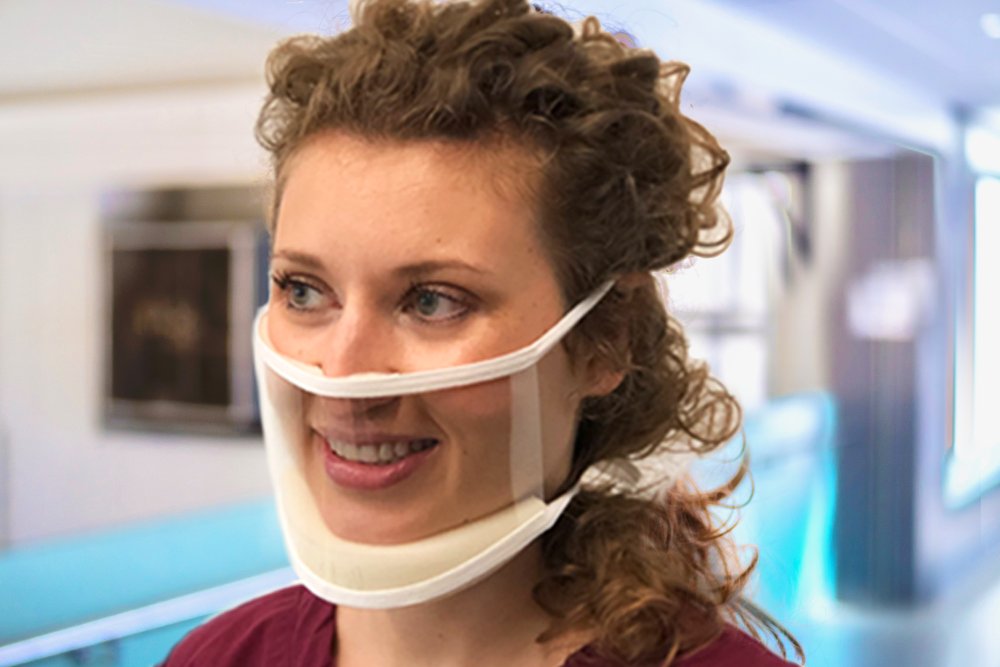From WAMU, NPR affiliate in Washington, D.C.:
WAMU |
From Zoom Meetings To Face Masks, Deaf People Face Extra Struggles During Coronavirus Pandemic

“I worry about how hospital staff won’t be familiar with any form of visual communication,” says Robb Dooling, who is deaf.Courtesy of Robb Dooling
The new norms of the coronavirus era — wearing face masks, maintaining social distance and conducting conversations through teleconference software — have made life more complicated for many of us. But for the deaf and hard-of-hearing, they have transformed quotidian tasks into technological labyrinths, and exposed a number of inequities in local health and government systems.
The Washington region has one of the largest populations per capita of deaf and hard-of-hearing people in the United States. The District’s deaf community is largely concentrated around Gallaudet University and the H Street Corridor.
One of the most well-documented pandemic challenges is communicating through face-obscuring masks.
The masks make it impossible for people who read lips to see people’s mouths or follow facial expressions during essential trips to the grocery store or doctor’s office. Facial expressions like nose crinkles and mouth movements are also components of American Sign Language.
Over the past few weeks, manufacturing companies and media outlets have been touting clear face masks as a quick and straightforward fix to the problem.
Exactly why our work on @the_clearmask is so important. We’re currently working with our hospitals and community on getting the masks out to those who need it the most. twitter.com/nursekelsey/st…
48 people are talking about this
This isn’t a perfect solution, though, for a number of reasons. For one, not all deaf people lip-read.
Burger’s sister, Kerry, does not. She brings a pen and paper with her wherever she goes. “When I told her my frustration with the masks, she chided me for not bringing paper and pen with me,” Burger says.
“I fear that a narrative around face masks would perpetuate the myth that all Deaf people read lips,” says Robb Dooling, a government employee and advocate for people with disabilities.
Deaf and hard-of-hearing people also worry that hospitals’ tightened visitor restrictions will mean it’ll be harder to find interpreters who can accompany them to their medical appointments.
Virginia resident Reema Bogin, who lost her hearing as an adult, recently wrote an op-ed in Arlington Magazine about her fears about contracting COVID-19 and going to the hospital without her husband, Alex.
“In-person interpreters are better for clear communications, but I would rather not put the interpreter at risk of COVID-19,” Dooling says. He plans to use his smartphone to reach a video interpreting service if he needs to seek out medical care.
Accessing breaking news updates and information about stay-at-home orders is another challenge. Advocates and government officials in the Washington region have been working to make all their communications around the coronavirus pandemic accessible, with mixed results.
D.C. Mayor Muriel Bowser’s office includes an interpreter at all of her daily coronavirus briefings. The organization Deaf In Government runs weekly webinars on everything from virtual participation in telework meetings to mental health. And the National Association of the Deaf has published a series of articles and how-tos about life during the pandemic.
But gaps still exist. D.C. Public School’s distance learning software does not make captioning or transcriptions available, making it inaccessible to deaf students and parents like Burger. And D.C. still doesn’t have a government office dedicated to the deaf or hard-of-hearing communities. (Maryland and Virginia both do.)
Baltimore Mayor Bernard C. “Jack” Young apologized to the city’s deaf community last week after cutting off a sign language interpreter during a news conference. Young had told the interpreter to stop signing the words of protesters who had drowned him out.
While the pandemic has created a spate of alarming new communication and health challenges for everyone in the D.C. region, Dooling points out that it’s also created new opportunities for hearing individuals to support their neighbors who don’t rely on spoken English.
Initiate visual communication by making eye contact or waving, he says. And learning even just the alphabet in American Sign Language goes a long way, too.
Burger feels the same way. “Knowing ASL would be so helpful,” she says. “Wish the whole world knew how to sign!”
This story was updated to reflect that interpreters have been consistently present at Bowser’s daily coronavirus briefings.
 Mikaela Lefrak
Mikaela Lefrak



No comments:
Post a Comment